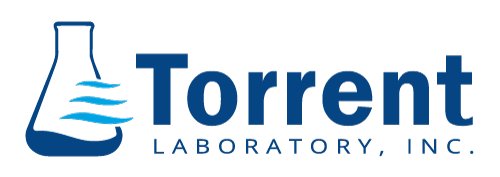
Understanding Vapor Intrusion Testing
What is Vapor Intrusion?
Vapor intrusion (VI) is the migration of chemical vapors from the subsurface into buildings. It is a frequent problem at or near contaminated sites. Subsurface chemical vapors in the soil or in groundwater can migrate into buildings and pose serious risks to human health. Vapor migration through building foundations and within buildings is complex and influenced by many natural and human-caused factors.
Vapor intrusion can result when the groundwater in the vicinity of your property is contaminated with a chemical or chemicals known as volatile organic compounds like TCE, PCE, vinyl chloride, benzene or toluene. These chemicals will often become gaseous and migrate up through the soil intruding into buildings and contaminating indoor air where people breathe in the noxious chemicals. Vapor intrusion can be a serious human health threat that is called vapor contamination.
How Does Vapor Intrusion Assessment Work?
The conceptual model for vapor intrusion investigation involves understanding the movement of Volatile Organic Compounds (VOCs) from a subsurface source toward a building, vapor entry into the building and the mixing of contaminants with indoor air. There are three factors that influence and control vapor transport in the subsurface. These factors are contaminant partitioning, diffusion (transport from high to low concentration) and advection (transport from high to low pressure). Diffusion is typically the dominant pathway for transporting vapor phase contaminants from any subsurface source and into a building.
Vapors in the soil near a building can be transported by both diffusion and advection into indoor
air via cracks, vents or other openings. Assessment of vapor intrusion must be carefully and repeatedly conducted by professionals who understand the variability of these vapors as well as where, when and how to collect indoor air samples. Testing laboratories are capable of identifying the dangerous presence of volatile vapors that have intruded into your business’s buildings and providing the testing results necessary to ensure the safety of your employees and customers.
Why Should Your Business Perform Vapor Intrusion Testing?
There are numerous influences such as climate (e.g., temperature, precipitation, barometric pressure), building conditions (e.g., type of foundation, age, size) and heating, ventilation and air conditioning (HVAC) operation, that lead to significant fluctuations in subsurface and indoor air vapor intrusion concentrations. Because there are clear possibilities for high variability in measurable intrusion levels, there is also high probability for false negative tests. This presents a real concern that potential risks associated with VI in indoor air will be underestimated.
In order to keep people safe, the state of California has worked hard to outline and describe a four-step process for determining whether buildings located near known or suspected subsurface vapor-forming chemical (VFC) contamination are potentially affected by VI that may pose a health risk to occupants. This four-step process is summarized by these steps:
- Prioritize buildings that are located near a source of contamination for a VI assessment.
- Collect exterior soil gas samples that will determine if buildings have the potential for VI.
- Collect indoor air, sub-slab soil gas, and outdoor air samples in all buildings found to have potential VI risks.
- Evaluate the need to manage current and future VI risk based on both indoor air concentrations and soil gas concentrations.
Contracting with a respected environmental testing laboratory that regularly works with governmental agencies, knows all of the regulations, has tremendous experience in sample collection and testing and that provides fast and reliable results is an absolute must for your business.
Who Should You Test With?
Torrent Laboratory offers your business all of the necessary advanced testing capabilities for vapor intrusion assessment.
Soil Vapor Testing
Torrent offers two types of soil vapor intrusion sampling: regular and low-level reporting.
Regular TO-15 tests have reporting limits of around 0.5 ppbv, which is sufficient for most soil vapor monitoring. For residential or commercial environmental screening levels (ESLs), Torrent offers low-level reporting. We use the TO-15 SIM technique, a sensitive methodology that can report data at the 0.005 ppbv level, ideal for the most precise applications.
Ambient Air Testing
Torrent continually invests in new methods, technologies, and procedures to offer the most advanced testing available. We supply data for a range of air methods, including NIOSH, OSHA, ASTM and EPA Air Compendium Methods (TO, CO, IO). Our unwavering commitment to quality is inspired by increasing environmental awareness and accountability, our clients’ needs, and our dedication to the continual advancement of testing and analysis.
Ambient Air Monitoring
For the most accurate results and for full remediation we offer ambient air monitoring services to give you full assurance and peace of mind.
Torrent Laboratory provides the most advanced capabilities in the region. Our full-service lab offers a host of advantages including:
- Highest certifications
- Fastest possible TAT in the industry
- Unrivaled technical and customer support
- Unparalleled on-time performance
- Impeccable quality
- Competitive pricing
- Convenient geographic location
Trust Torrent as your premier environmental vapor intrusion testing laboratory for California and Hawaii.






